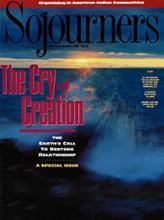MOST OF US HAVE NEVER HEARD OF GAULEY BRIDGE IN West Virginia. This is the site of the worst recorded occupational disaster in U.S. history. During the 1930s, hundreds of African-American workers from the Deep South were brought in by the New Kanawha Power Company, a subsidiary of the Union Carbide Corporation, to dig the Hawks Nest tunnel. Over a two-year period, approximately 500 workers died and 1,500 were disabled from silicosis, a lung disease similar to Black Lung.
Men literally dropped dead on their feet breathing air so thick with microscopic silica that they could not see more than a yard in front of them. Those who came out for air were beaten back into the tunnel with ax handles. At subsequent congressional hearings, New Kanawha's contractor revealed, "I knew I was going to kill these niggers, but I didn't know it was going to be this soon." An undertaker was hired to bury dead workers in unmarked graves; he agreed to perform this service for an extremely low rate because the company assured him that there would be a large number of deaths.
Some 40 years later, during the 1970s, a new vision began to emerge within the peace movement. This broad and influential movement in modern society began to grapple with a fundamental question about itself, its calling, and the premises upon which its actions were based. The question was this: Is it moral to advocate for peace without justice? Indeed, is it even possible to achieve peace without justice?
Out of the questions, a concept called peacemaking emerged. Not to be confused with peacekeeping, which implies the preservation of the status quo, this concept highlights the connection between peace and the protection of human rights. The religious community very naturally gravitated toward the debate.
Read the Full Article

